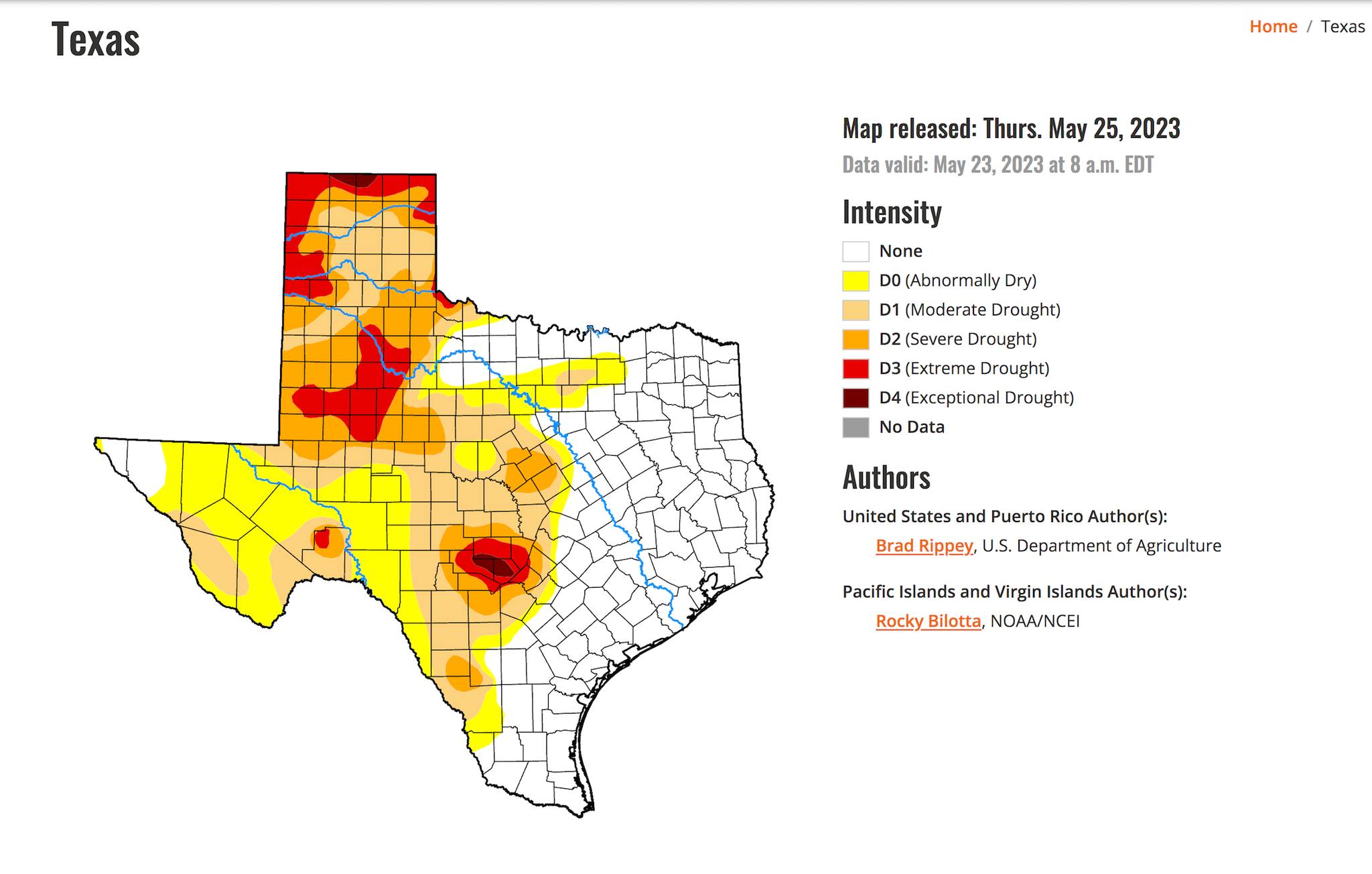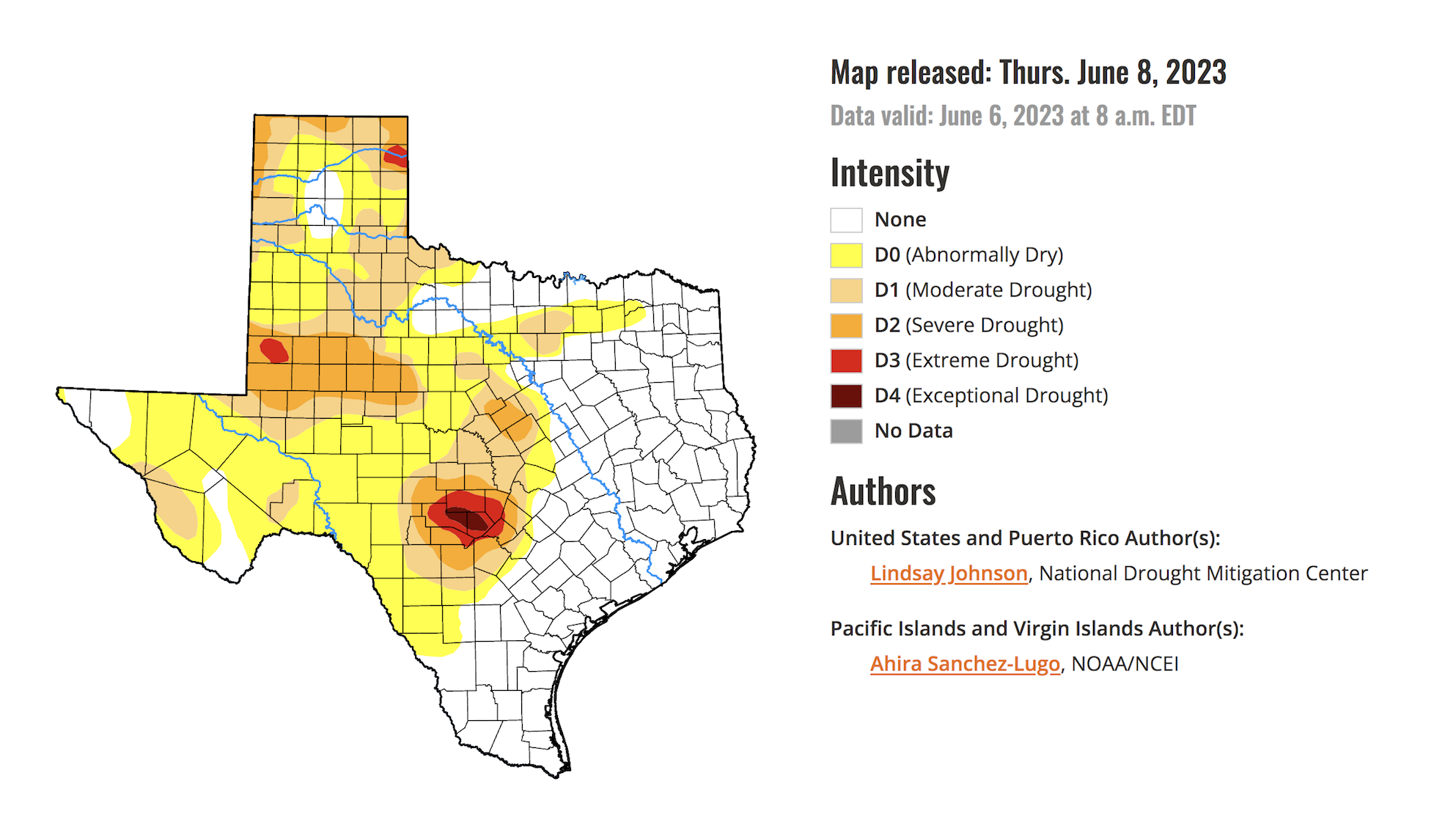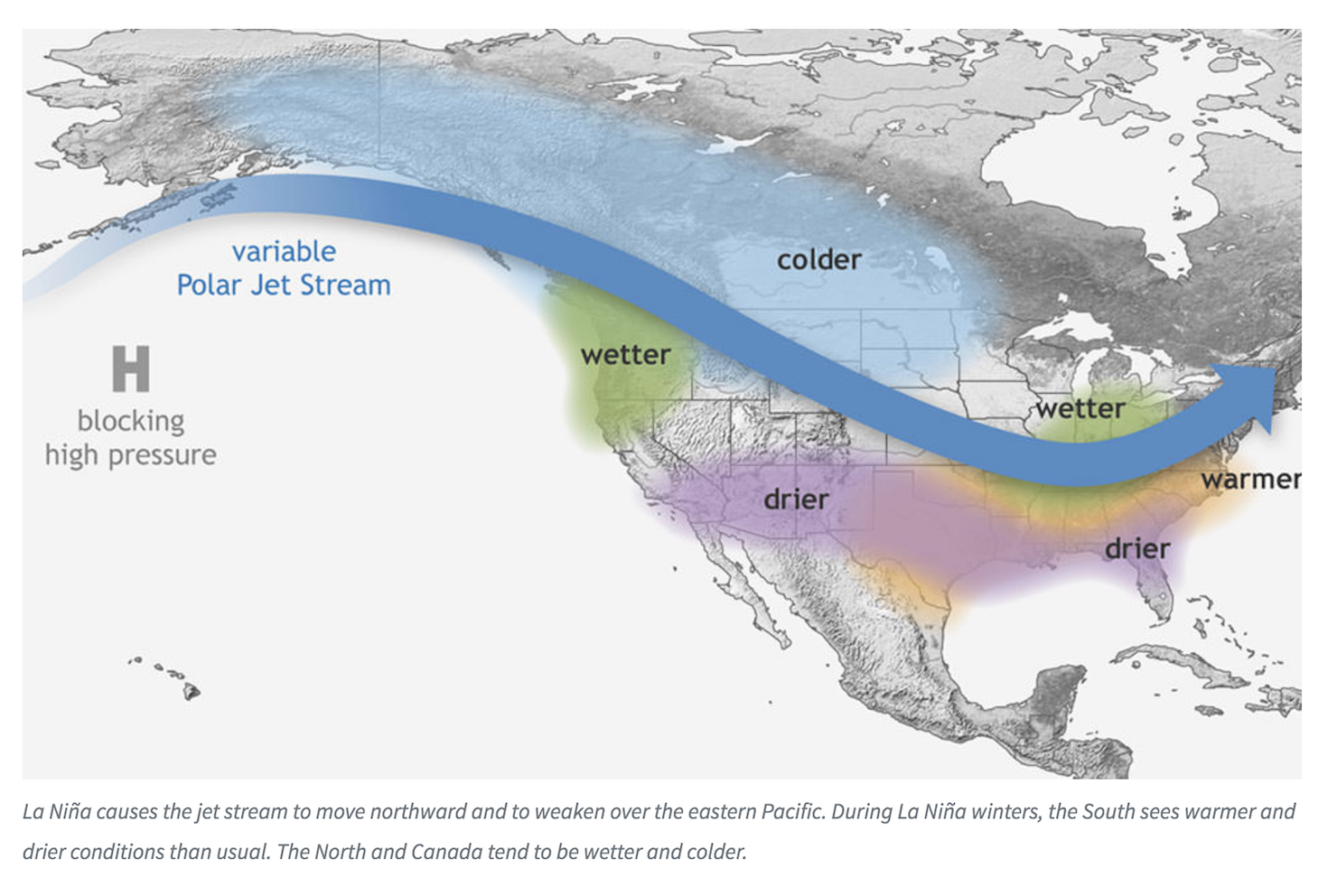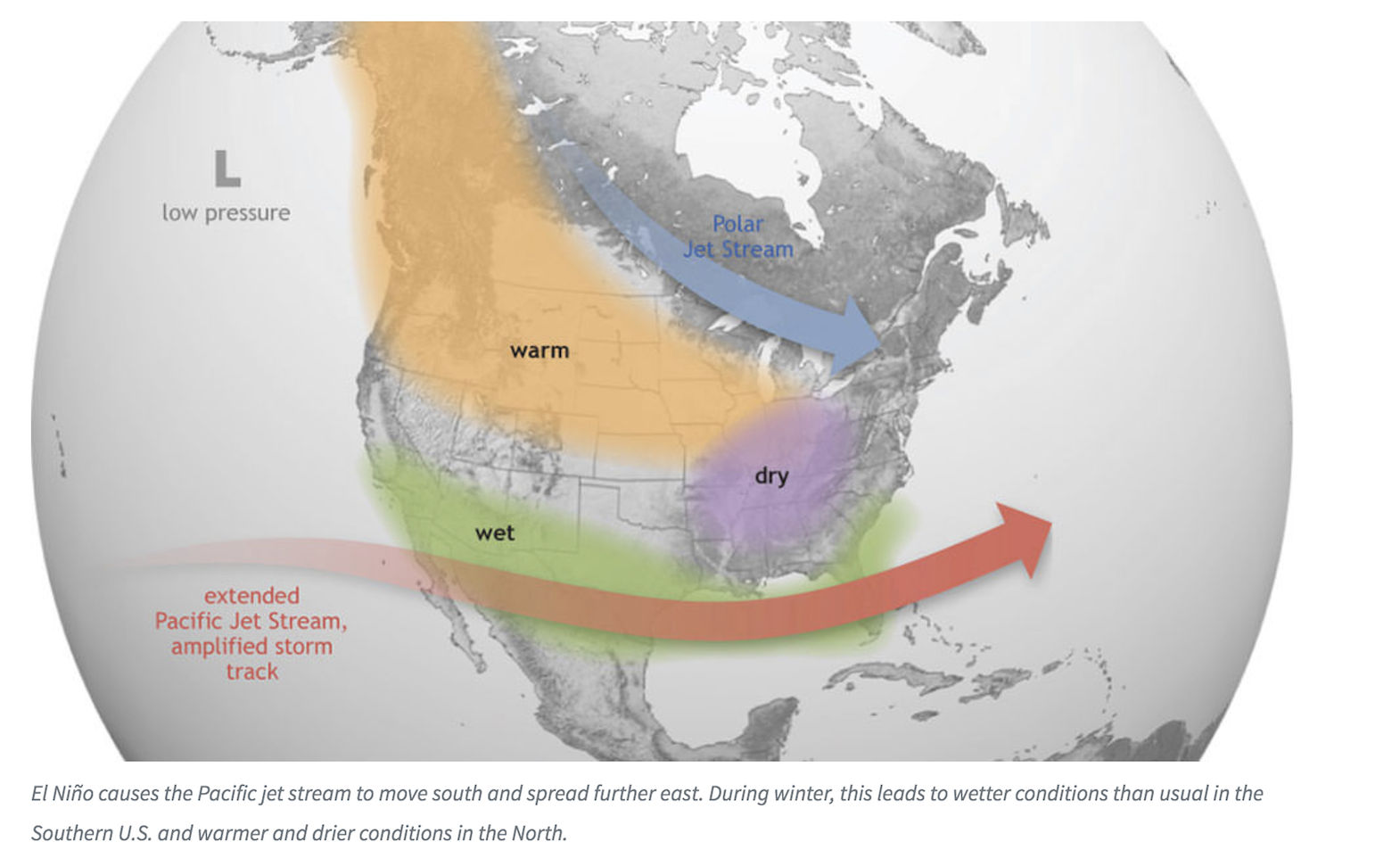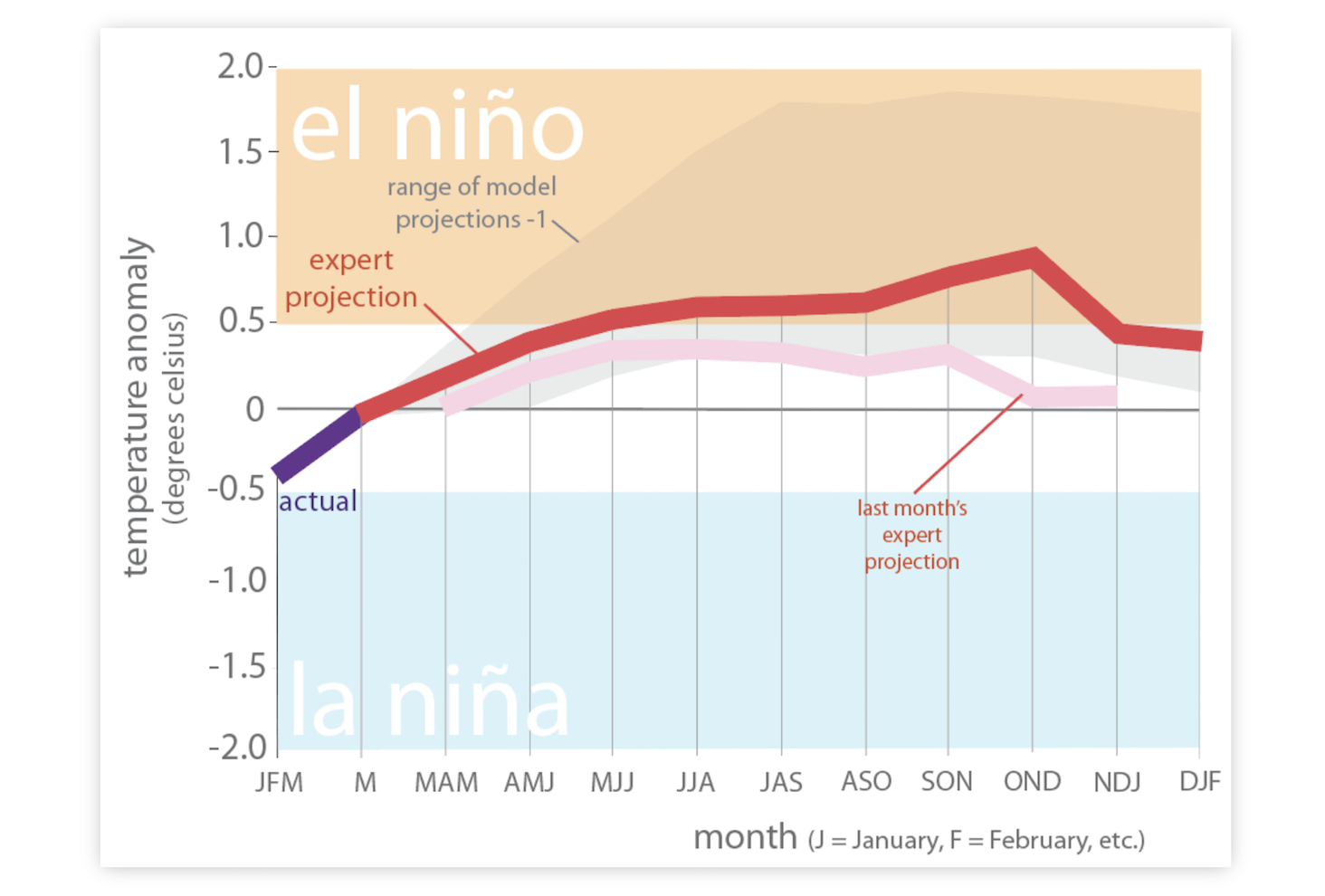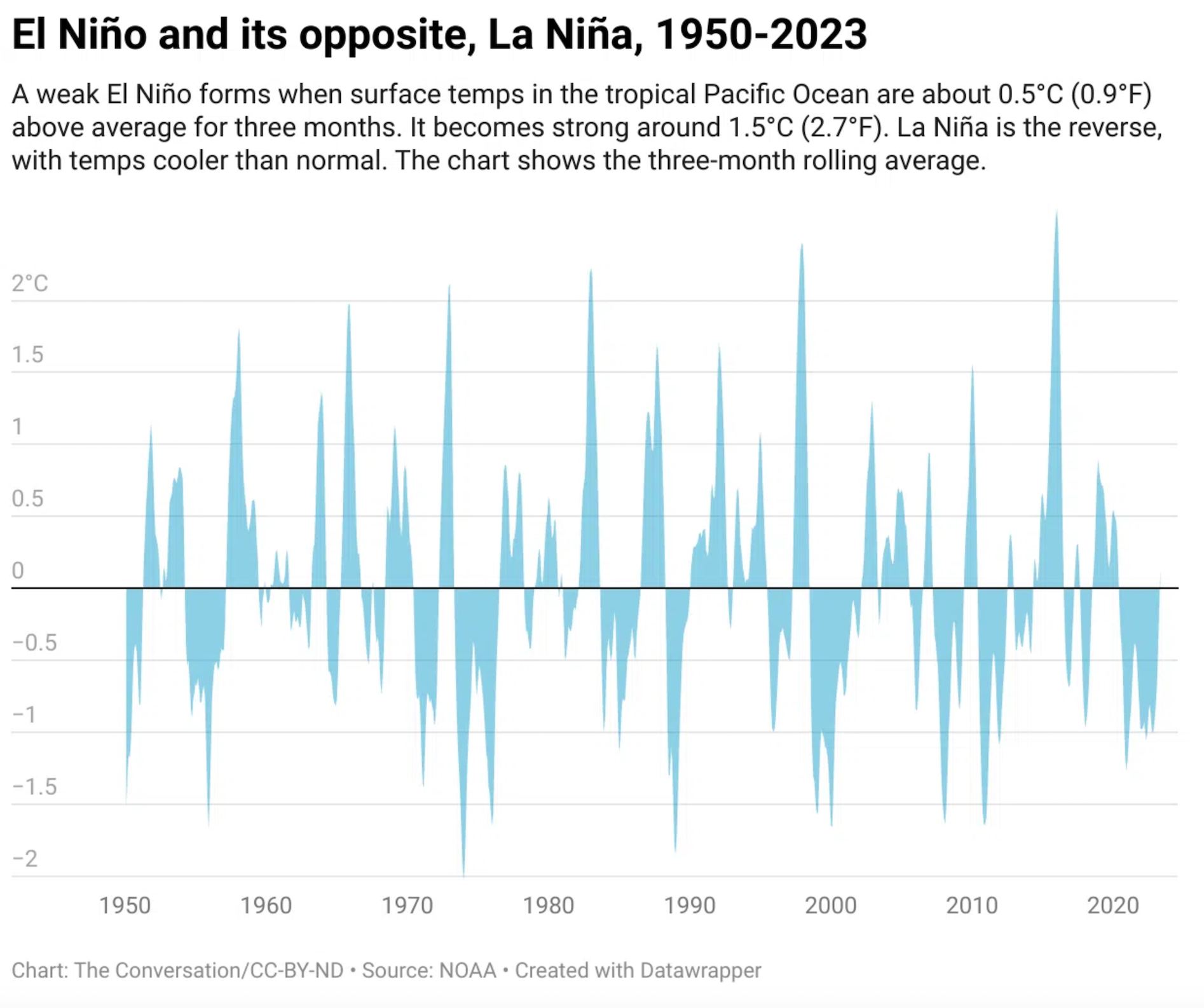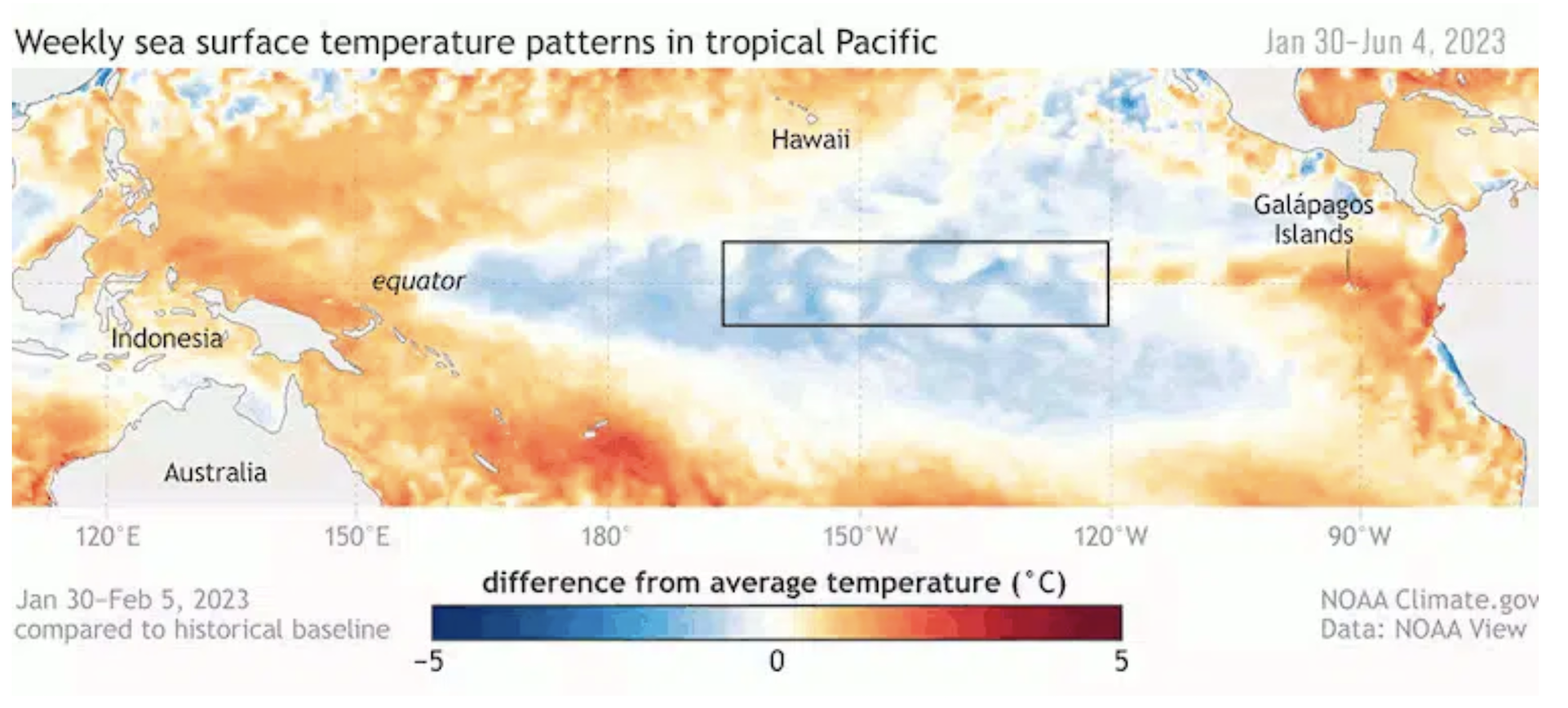 Parts of Texas have received quite a bit of rain over the last month, some more than 5 inches, while some parts in West Texas have seen less than an inch. However, the rain across the state has helped significantly with drought conditions.
Parts of Texas have received quite a bit of rain over the last month, some more than 5 inches, while some parts in West Texas have seen less than an inch. However, the rain across the state has helped significantly with drought conditions.
https://droughtmonitor.unl.edu/CurrentMap/StateDroughtMonitor.aspx?TX
https://droughtmonitor.unl.edu/CurrentMap/StateDroughtMonitor.aspx?TX
As you can see from the last two weeks, exceptional and extreme drought categories have decreased. There are still areas of concern and the majority of the state still remains abnormally dry or worse but these recent rains have really helped the Panhandle areas of Texas.
Recognizing the differences between La Niña and El Niño when it comes to sea-surface temperatures is crucial for anyone dependent on working landscapes.
La Niña causes the South of the United States to see warmer and drier conditions, this is due to the waters off the Pacific coast being cooler.
https://oceanservice.noaa.gov/facts/ninonina.html
El Niño has warmer waters which causes the Pacific jet stream to move south of its neutral position. When this shift happens, the Southern region of the United States have wetter regions.
https://oceanservice.noaa.gov/facts/ninonina.html
We are currently under an El Niño watch with a 90% chance of El Niño continuing into the winter. Experts believe that we will enter El Niño conditions over the next couple of months.
This is good news for Texas and the Gulf Coast areas as the additional rains will help replenish the dry areas across the state.
For a strong El Niño, the Niño 3.4 region needs to warm by 2.7 F (1.5 C) for three months. It’s not clear as of right now whether this El Niño will meet that threshold this year.
The National Oceanic and Atmospheric Administration’s first El Niño advisory of the year, released on June 8, sees an 84% chance of El Niño being greater than moderate by winter and a 56% chance that it will be strong.
What does this mean for current 2023 forage production in West Texas? We are trending slightly above only 50% of the long-term average for forage production.
And, trending significantly below previous year’s annual production (lbs./acre) too. Bottom line, pastures are recovering but rest is key right now.
For more information on drought conditions be sure to check out this full article of Texas + Water.
For more details on the warmer globally super-high ocean temperatures that are occurring right now as the Atlantic is unusually warm, and how this could offset some of the usual forces that come with El Niño, check out https://theconversation.com/el-nino-is-back-thats-good-news-or-bad-news-depending-on-where-you-live-205974.
